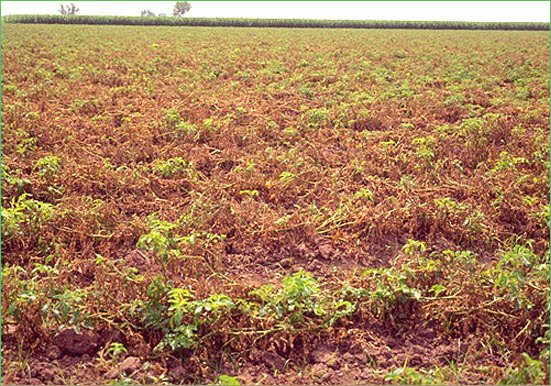
© BioPotatoes Limited
The Grove House, Swanmore Road, Droxford Hampshire SO32 3PT
Tel: (44)7899-
Conventional breeding is slow, expensive and uncertain – and it is near impossible to combine effective resistance to the most significant diseases and pests with the other features demanded by farmers, processors and consumers.
Breeding varieties with durable resistance to late blight has proved extremely difficult.
At least half a dozen resistance genes have been identified in wild potato species
which give resistance to at least some races of the pathogen. But varieties such
as Cara, Valor, Remarka and Lady Balfour, once considered relatively blight resistance,
have succumbed – in particular to a virulent recently-
In contrast, the GM approach now allows a whole array of useful genes to be stacked in the best existing varieties. With recent major advances in transformation technology the GM process offers speed, precision and relatively low costs.
Why GM varieties are essential

Late blight resistance based on only one gene is also liable to break down sooner or later, so it is very desirable to stack two or more complementary genes both to enhance resistance and extend its life. Such resistance should greatly reduce the need for expensive fungicides, some of which are likely to be banned by the EU.
Potato growers’ other big need today is for varieties with effective and robust nematode
resistance, and again genes giving protection to all significant nematodes have been
discovered and field-
Other production genes
There is clear scope to develop GM varieties with other valuable yield-